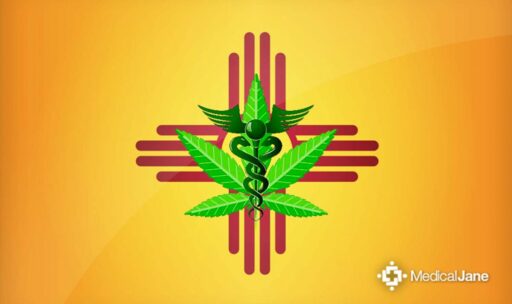The landscape of medical marijuana in Virginia has undergone significant changes, marking a new era in the state’s approach to cannabis for therapeutic purposes. This article delves into the legal implications and accessibility of medical marijuana, exploring the recent legalization efforts, regulatory framework, and the impact on patients and public health. As Virginia navigates this evolving terrain, it becomes essential to understand the multifaceted aspects of medical marijuana use, from the legal challenges to the ongoing debates shaping the future of cannabis policy in the state.
Key Takeaways
- Virginia’s recent legislation marks a progressive shift in the state’s stance on medical marijuana, aligning with a broader national trend towards cannabis legalization.
- The regulatory landscape in Virginia includes stringent licensing and distribution protocols, ensuring quality control and safety for medical marijuana products.
- Patients in Virginia face specific eligibility criteria and a defined process to obtain medical marijuana, with considerations around insurance coverage and cost.
- Public health and safety are prioritized through research, monitoring of adverse effects, and educational initiatives aimed at promoting responsible use of medical marijuana.
- Legal challenges persist due to federal-state law conflicts, with ongoing court cases and debates likely to influence the future direction of medical marijuana legislation in Virginia.
Overview of Medical Marijuana Legalization in Virginia

Historical Context and Recent Legislation
The journey towards the legalization of medical marijuana in Virginia has been marked by significant milestones. The Virginia Legislature’s recent passage of a bill legalizing retail marijuana sales is a pivotal moment in this journey, setting a clear date for the commencement of legal sales.
Prior to this, Virginia’s approach to marijuana was one of cautious progression, with initial laws focusing on decriminalization and the establishment of a medical marijuana program. The recent legislation represents a shift towards a more comprehensive legal framework, aligning Virginia with a growing number of states that have embraced the legalization of marijuana for medical purposes.
The new legislation is expected to have profound implications for patients, healthcare providers, and the legal system, as it introduces a structured approach to the distribution and regulation of medical marijuana.
The timeline for the implementation of this legislation is as follows:
- May 1, 2025: Legal retail marijuana sales begin
- Prior years: Establishment and expansion of medical marijuana program
- Ongoing: Development of regulatory guidelines and safety protocols
Key Provisions of the Legal Framework
The legal framework for medical marijuana in Virginia is designed to ensure that patients have access to safe and regulated cannabis products for therapeutic use. The cornerstone of this framework is the establishment of a comprehensive system for licensing, production, and distribution. This system is intended to prevent misuse while facilitating access for qualified patients.
Key provisions include:
- A regulatory body responsible for overseeing the medical marijuana program.
- Strict criteria for qualifying medical conditions.
- A detailed application process for patients and caregivers.
- Regulations governing the cultivation, processing, and dispensing of medical marijuana.
- Specific labeling and packaging requirements to ensure product safety.
The goal of these provisions is to balance patient needs with public safety concerns, creating a controlled environment that minimizes risks associated with cannabis use.
The passage of House Bill No. 698 by the Virginia General Assembly marks a significant milestone in the state’s cannabis policy, signaling a shift towards a more inclusive recreational marijuana regime.
Comparison with Other States
Virginia’s approach to medical marijuana legalization shares similarities with several states, while also exhibiting unique characteristics. Key differences lie in the specific qualifying conditions and the regulatory structures governing the industry.
- California: Pioneered medical marijuana legalization; offers a wide range of qualifying conditions.
- Colorado: Known for a robust regulatory system; also permits recreational use.
- New York: Has a more restrictive list of qualifying conditions and stringent regulations.
Virginia’s medical marijuana program is particularly noteworthy for its emphasis on pharmaceutical processors, which are vertically integrated facilities that handle everything from cultivation to dispensing.
While Virginia’s program is still evolving, it is designed to ensure that patients have access to safe and effective treatment options. The state’s cautious expansion of qualifying conditions and careful monitoring of the program’s impact reflect a commitment to public health and safety.
Regulatory Landscape for Medical Marijuana

Licensing and Distribution
In Virginia, the licensing and distribution of medical marijuana are tightly regulated to ensure compliance with state laws and patient safety. Prospective dispensaries must navigate a comprehensive application process that includes background checks, business plans, and security measures.
- Application submission and initial screening
- Detailed review of business and operational plans
- Security and background checks for all staff
- Approval and issuance of a dispensary license
The state maintains a rigorous oversight mechanism to prevent diversion and misuse while facilitating access for qualified patients.
The Virginia Board of Pharmacy oversees the licensing process, which is designed to be transparent and fair, providing equal opportunity for applicants. It is essential for dispensaries to keep abreast of legislative updates, such as those in the Bill Tracking – 2024 session, to adapt to any changes in the regulatory landscape.
Quality Control and Safety Standards
In Virginia, the commitment to ensuring the safety and quality of medical marijuana products is paramount. The state has established a comprehensive set of standards that producers must adhere to, from cultivation to distribution. These regulations are designed to protect patients by guaranteeing that products are free of contaminants and accurately labeled with cannabinoid profiles.
- Cultivation: Strict guidelines govern the growing conditions, including the use of pesticides and other chemicals.
- Processing: Extraction methods must meet safety standards to prevent contamination.
- Testing: All products undergo rigorous testing for potency and purity.
- Labeling: Clear labeling is required to inform patients of THC and CBD content, as well as other active ingredients.
The regulatory framework in Virginia is structured to foster a safe environment for medical marijuana use, with patient health as the foremost concern.
Ensuring that these standards are met involves regular inspections and compliance checks by state authorities. Producers who fail to meet the quality and safety benchmarks may face penalties, including the revocation of their license to operate.
Legal Boundaries for Medical Practitioners
In Virginia, medical practitioners are at the forefront of the medical marijuana program, tasked with the responsibility of evaluating, recommending, and monitoring its use among patients. Medical professionals must adhere to strict guidelines to ensure compliance with state laws and to maintain the integrity of the program.
- Practitioners must be registered with the Virginia Board of Pharmacy.
- They are required to complete a Board-approved continuing education course.
- A bona fide practitioner-patient relationship is necessary before issuing a recommendation for medical marijuana.
- Recommendations for medical marijuana must be based on a qualifying medical condition.
The role of medical practitioners is critical in balancing patient access with legal compliance, ensuring that medical marijuana is recommended responsibly and ethically.
Medical practitioners also face limitations on advertising and the types of products they can recommend. The state maintains a list of approved formulations, and practitioners are prohibited from recommending any form of cannabis not on this list. Violations of these boundaries can result in disciplinary actions, including the revocation of the right to recommend medical marijuana.
Patient Access and Qualifying Conditions

Eligibility Criteria for Patients
In Virginia, the landscape for medical marijuana access has undergone significant changes. Patients no longer need a medical marijuana card to obtain medicinal cannabis; instead, a valid written certification from a registered healthcare provider is sufficient. This shift simplifies the process for patients seeking relief through medical marijuana.
Eligibility for medical marijuana in Virginia is determined by a set of qualifying conditions. Patients with conditions such as chronic pain, epilepsy, and multiple sclerosis, among others, may be eligible for treatment. The following is a list of common qualifying conditions:
- Chronic pain
- Epilepsy
- Glaucoma
- Cancer
- Multiple sclerosis
- Crohn’s disease
It is essential for patients to consult with a healthcare provider who is registered with the Virginia Board of Pharmacy to discuss potential treatment with medical marijuana and obtain the necessary certification.
The certification process involves an evaluation of the patient’s medical history and current health status to ensure that medical marijuana is an appropriate treatment option. Once certified, patients can legally purchase medical marijuana from licensed dispensaries across the state.
Process of Obtaining Medical Marijuana
In Virginia, the process of obtaining medical marijuana is streamlined to ensure eligible patients can access their medication with minimal hassle. The journey begins with a patient filling out a detailed application form, which includes personal information and medical history.
- Step 1: Fill up your details in an easy 420 Evaluations form.
- Step 2: Get Evaluated by a Local MMJ doctor.
- Step 3: Receive your medical marijuana card and visit a licensed dispensary.
Once the application is submitted, a state-licensed MMJ doctor evaluates the patient’s condition. If the patient meets the qualifying criteria, they are issued a medical marijuana card, which grants them the legal right to purchase and possess medical cannabis from licensed dispensaries.
It is essential for patients to follow the state guidelines meticulously to maintain the validity of their medical marijuana card and ensure uninterrupted access to their medication.
Insurance Coverage and Cost Considerations
Despite the legalization of medical marijuana in Virginia, insurance companies do not cover the cost of medical marijuana. This is primarily due to the federal classification of marijuana as a Schedule I drug, which limits its acceptance in mainstream healthcare coverage. Patients must therefore bear the full cost out-of-pocket, which can vary widely depending on the type and quantity of marijuana products purchased.
Costs can also be influenced by the choice of dispensaries, as prices may differ. To assist patients in understanding the potential financial burden, a comparison of average costs for common medical marijuana products is provided below:
| Product Type | Average Cost in Virginia |
|---|---|
| Flower (per ounce) | $300 – $400 |
| Edibles (per package) | $20 – $50 |
| Vaporizer Cartridges (per unit) | $45 – $80 |
It is essential for patients to consider the long-term financial implications of medical marijuana treatment, especially since it requires consistent out-of-pocket expenditure.
For those seeking more information on the legal status and nuances of medical marijuana across different states, a comprehensive resource can be found on a website page discussing marijuana legalization, which includes categories like dispensaries, ediles, and vaporizers, covering states such as Georgia, New York, and Florida.
Impact on Public Health and Safety

Research on Medical Marijuana Efficacy
The efficacy of medical marijuana has been a subject of extensive research and debate. Recent studies have shown promising results in the use of cannabis for treating various medical conditions. For instance, a study titled ‘Medical Cannabis Associated With Symptom Improvements’ revealed consistent findings with other international research, such as those from the United Kingdom, highlighting the potential benefits of medicinal cannabis.
The therapeutic potential of medical marijuana is supported by a growing body of research, suggesting improvements in patient symptoms and quality of life.
While the evidence continues to accumulate, it is important to consider the data in a structured manner. Below is a summary of key findings from recent studies:
- Reduction in chronic pain symptoms
- Improvement in multiple sclerosis-related spasticity
- Decrease in chemotherapy-induced nausea and vomiting
- Enhanced sleep quality for individuals with sleep disorders
These findings underscore the need for continued research and the development of standardized treatment protocols.
Monitoring and Reporting Adverse Effects
The vigilant monitoring and reporting of adverse effects are crucial in the medical marijuana landscape. Healthcare providers are required to report any serious adverse effects to ensure patient safety and the continuous evaluation of cannabis-related products. This reporting process is instrumental in identifying potential risks and developing strategies to mitigate them.
- Adverse effects can range from mild to severe and must be documented meticulously.
- Reports are typically submitted to regulatory bodies, such as the Food and Drug Administration (FDA).
- The data collected helps in assessing the safety profile of medical marijuana and guides future regulatory decisions.
The FDA reviews such reports and will continue to monitor adverse event reports for any safety signals, with a focus on serious adverse effects. This proactive approach is essential for maintaining public health while allowing patients access to medical marijuana therapies.
Educational Initiatives for Responsible Use
As Virginia embraces the therapeutic potentials of medical marijuana, educational initiatives have become paramount to ensure responsible use and understanding of cannabis-related products. Public health campaigns and informational resources are being developed to guide patients and the general public on the safe consumption of medical marijuana.
- Awareness programs highlight the importance of adhering to prescribed dosages.
- Educational materials explain the differences between medical and recreational use.
- Training sessions for healthcare providers focus on proper prescription practices and patient communication.
It is essential for individuals to recognize the distinction between therapeutic benefits and the potential for misuse. By fostering an informed community, Virginia aims to mitigate risks associated with the improper use of medical marijuana.
The state’s commitment to education reflects a proactive approach to integrating medical marijuana into society while prioritizing public health and safety. This effort is particularly significant in light of recent legislative developments that could expand access to marijuana beyond medical purposes.
Legal Challenges and Ongoing Debates

Federal vs. State Law Conflicts
The legalization of medical marijuana in Virginia has brought to the forefront the ongoing conflicts between federal and state laws. Federal law still classifies marijuana as a Schedule I controlled substance, which creates a complex legal landscape for states like Virginia that have chosen to legalize its medical use.
Despite state laws permitting the use of medical marijuana, patients and providers must navigate a precarious situation where compliance with state law may still result in federal legal risks. This dichotomy has led to a variety of challenges:
- Ensuring that state-licensed businesses are not targeted by federal law enforcement
- Protecting patients’ rights to access medical marijuana without federal repercussions
- Reconciling state and federal laws for medical practitioners prescribing marijuana
The tension between state legalization and federal prohibition has necessitated careful legal maneuvering to protect stakeholders involved in the medical marijuana industry in Virginia.
As the landscape evolves, stakeholders are closely monitoring legal developments and potential changes at the federal level that could harmonize these conflicting laws.
Cases and Controversies in the Courts
The legal landscape of medical marijuana in Virginia is not without its disputes and legal challenges. One significant area of contention involves the intersection of marijuana use and family law. A notable example is the Virginia Bill that aims to prevent marijuana from being used as evidence of child abuse or neglect, reflecting a shift in legal perspectives as the state navigates the implications of medical marijuana legalization.
- The bill has sparked debate on the balance between protecting children and respecting the rights of medical marijuana users.
- It underscores the evolving nature of marijuana-related jurisprudence in Virginia.
- The legislation also highlights the need for clear guidelines to prevent discriminatory practices against medical marijuana patients.
This development is a microcosm of the broader legal challenges faced by states that have legalized medical marijuana. It exemplifies the ongoing efforts to harmonize state laws with societal attitudes and medical practices.
Future of Medical Marijuana Legislation
As Virginia approaches a new chapter in its cannabis policy, the future of medical marijuana legislation remains a dynamic and evolving landscape. With proposals already in motion, a significant date looms on the horizon: May 1, 2025, is earmarked as the potential start date for recreational marijuana sales, indicating a shift that could influence medical marijuana regulations as well.
The integration of recreational and medical marijuana markets will require careful consideration to ensure that patient needs are not overshadowed by the commercial aspects of legalization.
The state’s readiness to accept dispensary applications as early as this September suggests a proactive stance in establishing a robust medical marijuana infrastructure. This development could pave the way for a more accessible and comprehensive system for patients.
- Anticipated legislative changes
- Impact on existing medical marijuana framework
- Potential for increased research and development
The dialogue surrounding medical marijuana is far from over, with ongoing debates likely to shape the contours of future legislation. Stakeholders, including patients, healthcare providers, and lawmakers, will play a crucial role in this process.
Conclusion
The advent of medical marijuana in Virginia marks a significant shift in the state’s approach to cannabis regulation and patient care. As legal frameworks evolve to accommodate this change, it is imperative for both patients and providers to stay informed about the legal implications and the mechanisms of access. The journey towards a fully integrated medical marijuana program in Virginia is fraught with complexities, but it also offers a beacon of hope for those seeking alternative therapeutic options. As we navigate this new era, the collective efforts of lawmakers, healthcare professionals, and the community will be crucial in ensuring that the benefits of medical marijuana are realized ethically and responsibly, with a steadfast commitment to public health and safety.
Frequently Asked Questions
When was medical marijuana legalized in Virginia?
Medical marijuana was legalized in Virginia with the passage of specific legislation in 2020, which allowed for the establishment of a regulated medical marijuana program in the state.
What are the key provisions of Virginia’s medical marijuana legal framework?
Key provisions include the establishment of a regulated dispensary system, a list of qualifying medical conditions, and the requirement for patients to obtain a recommendation from a registered healthcare provider.
How does Virginia’s medical marijuana program compare to other states?
While Virginia’s program shares similarities with other states in terms of patient registration and qualifying conditions, it may differ in the types and quantities of products available, as well as specific regulatory details.
What are the qualifying conditions for medical marijuana in Virginia?
Qualifying conditions for medical marijuana in Virginia include, but are not limited to, chronic pain, cancer, epilepsy, glaucoma, and conditions requiring hospice care. The full list is specified by the Virginia Board of Pharmacy.
Can patients in Virginia get medical marijuana covered by insurance?
Currently, medical marijuana is not covered by health insurance in Virginia due to federal regulations classifying cannabis as a Schedule I controlled substance.
What are the legal challenges facing medical marijuana legislation in Virginia?
Legal challenges include conflicts between state and federal law, as federal law still classifies marijuana as illegal, creating difficulties for businesses and patients in terms of banking, insurance, and legal protection.





